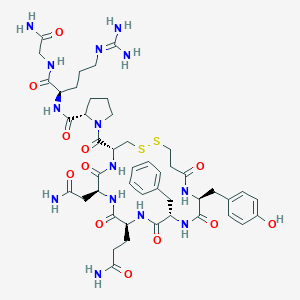Diagnosis of diabetes insipidus
Adult: 2 mcg via IM or SC inj.
Child: Same as adult dose.
Child: Same as adult dose.
Intramuscular, Intravenous, Subcutaneous
Cranial diabetes insipidus
Adult: 1-4 mcg once daily via IV, IM or SC inj.
Child: 0.4 mcg daily via IV, IM, SC inj.
Child: 0.4 mcg daily via IV, IM, SC inj.
Intramuscular, Subcutaneous
Renal function testing
Adult: 2 mcg via IM or SC inj.
Child: Same as adult dose.
Child: Same as adult dose.
Intramuscular, Subcutaneous
Headache following lumbar puncture
Adult: 4 mcg via IM or SC inj, may be repeated after 24 hr if needed. May also be given as prophylaxis.
Intravenous
Testing of fibrinolytic response
Adult: 0.4 mcg/kg infusion over 20 min.
Child: Same as adult dose.
Child: Same as adult dose.
Intravenous
Type I Von Willebrand's disease
Adult: 0.4 mcg/kg by slow infusion over 15-30 min before surgery. Further dose may be given at 12-hr interval.
Child: Same as adult dose.
Child: Same as adult dose.
Nasal
Type I Von Willebrand's disease
Adult: 300 mcg; <50 kg: 150 mcg. Should be given 0.5-2 hr before surgery.
Nasal
Diagnosis of diabetes insipidus
Adult: 20 mcg as a single dose.
Child: Same as adult dose.
Child: Same as adult dose.
Nasal
Renal function testing
Adult: 40 mcg as a single dose.
Child: ≤1 yr 10 mcg; >1-15 yr 20 mcg. Both given as a single dose.
Child: ≤1 yr 10 mcg; >1-15 yr 20 mcg. Both given as a single dose.
Nasal
Nocturia associated with multiple sclerosis
Adult: 10-20 mcg at bedtime.
Nasal
Cranial diabetes insipidus
Adult: 10-20 mcg once daily or bid.
Child: 5-20 mcg daily. Infants may require lower dose.
Child: 5-20 mcg daily. Infants may require lower dose.
Oral
Cranial diabetes insipidus
Adult: Initially, 100 mcg tid, adjust according to response. Maintenance: 100-200 mcg tid up to 100-1,200 mcg daily.
Child: Same as adult dose.
Child: Same as adult dose.
Oral
Primary nocturnal enuresis
Adult: Initially, 200 mcg at bedtime, may titrate up to 600 mcg to achieve desired response.
Child: ≥6 yr Initially, 200 mcg at bedtime, may titrate up to 600 mcg to achieve desired response.
Child: ≥6 yr Initially, 200 mcg at bedtime, may titrate up to 600 mcg to achieve desired response.
Sublingual
Cranial diabetes insipidus
Adult: Initially, 60 mcg tid. Maintenance: 60-120 mcg tid up to 720 mcg daily.
Child: Same as adult dose.
Child: Same as adult dose.




 Sign Out
Sign Out




